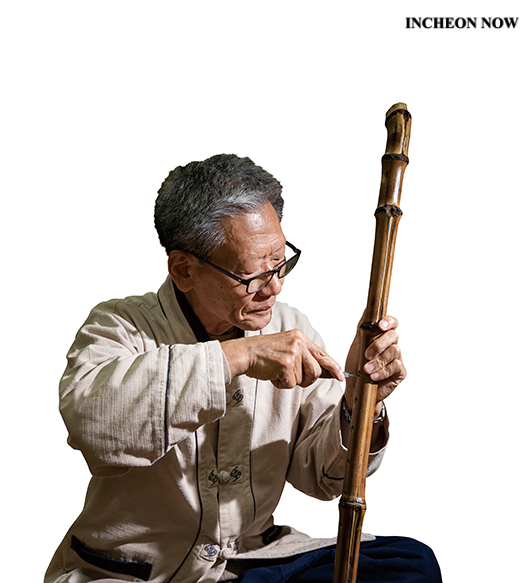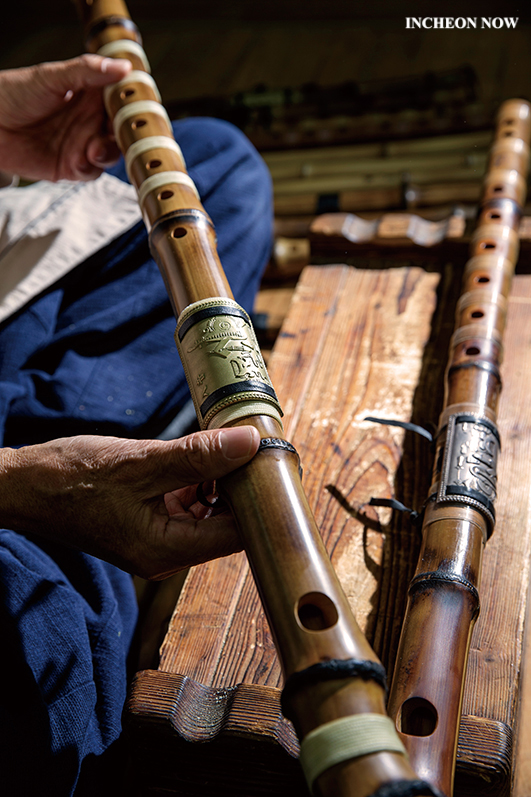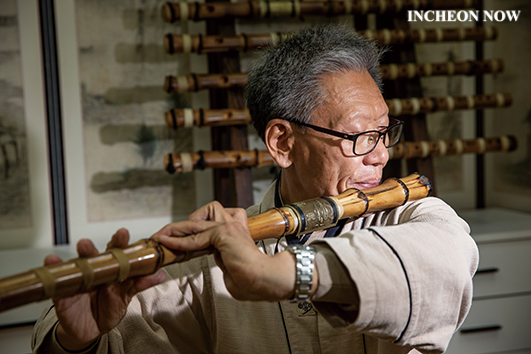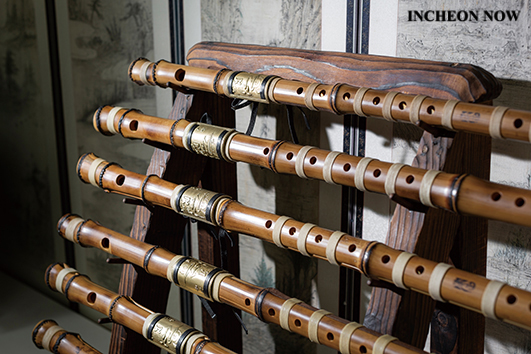Incheon’s Intangible Cultural Heritage No. 6 Daegeumjang (Master Daegeum Maker)
Incheon’s Intangible Cultural Heritage No. 4 Daegeum Jeongak Initiate _ Im Gyeong-bae

The history of daegeum dates as far back as the Silla Dynasty. King Shinmun called daegeum, ‘Manpa Sikjeok,’ meaning that it is an instrument that quells ten thousand worries. At the time, daegeum was a precious instrument, treated as a national treasure. The nobility of the instrument continues to this day. We visited the master daegeum maker Im Gyeong-bae, who has been immersed in the charms of daegeum for over 40 years, and listened to his story about ‘daegeum.’
Daegeum, Bearing Noble Resonance
Daegeum is as intricate to make as it is invaluable. To make a daegeum, you must collect bamboo grown from November until the new buds come out every year. For daegeum, a mutant species called ‘Ssanggoljuk’ is used. ‘Ssanggoljuk’ is characterized by its thick wall and narrow hole, which are perfect for making an instrument that needs to produce consistent sounds. However, finding ssanggoljuk that produces a good sound is quite difficult. They even compare it to as being as difficult to find wild ginseng.
“Getting high-quality bamboo is the most important in making a good daegeum. When I find a rare ssanggoljuk, I feel so good ‘Eureka!’”
Once you find the bamboo, you need to trim it into shape by heating it over a fire and dry it carefully for three to four years in the shade. Later, the master makes holes according to the characteristics of the bamboo and the sound. When the master imbues the instrument with the spirit and wisdom of our ancestors, the bamboo turns into a daegeum with a clean and pure sound.

Connection that began from Attraction
Born in ‘Mulchedang Historic House,’ an important cultural heritage designated by the government, the master daegeum maker grew up listening to his grandfather reading books. His life with the daegeum began over 40 years ago. It was when he was learning calligraphy, fascinated by Korean traditional culture.
“A middle school student brought a daegeum to the calligraphy school. I asked him to play and he played ‘Five Centuries.’ It sounded so good that I bought the instrument right away and lived with it ever since. I didn’t even know how to play it, then.”
Im was mesmerized by the sound of daegeum he heard by chance and became quite fond of it. The wish to study under a professional surged into his mind. That passion was answered in Incheon in 1994. He started his life with daegeum that he longed for so ardently began when he met the late virtuoso Kim Jeong-sik (Incheon’s Intangible Cultural Heritage No. 6 Master Daegeum Maker and Intangible Cultural Heritage No. 4 Daegeum Jeongak Master (Classical Daegeum Solo Music) at the time).
“With the dedication that I must learn to play it properly to make ‘exquisite daegeum,’ I learned how to play and make daegeum. I inherited his title and I am continuing his legacy, today.”

Master Daegeum Maker’s Dream
Daegeum is not an easy instrument to try for modern people. Even the material to make the instrument alone costs hundreds of dollars, making the instrument quite expensive. Also, it is hard just to make a sound for beginners.
“Daegeum is not easy to get used to. It is another aspect that makes the instrument charming. Because it is difficult to learn it, it gives a sense of pride once you learn it.” This is why Master Im is continuing to work hard to let many people know the charms of daegeum and increase the pride about learning it.
“I have been teaching students at school from the time they first learn about daegeum. Some of them have already chose to major in daegeum. I feel the greatest worth and joy when I see young people who properly learned and continue our heritage.”
Our sound continues to resonate from the hands of the master daegeum maker playing the instrument. We hope the melody from his fingertips reach the ears and hearts of more people.
